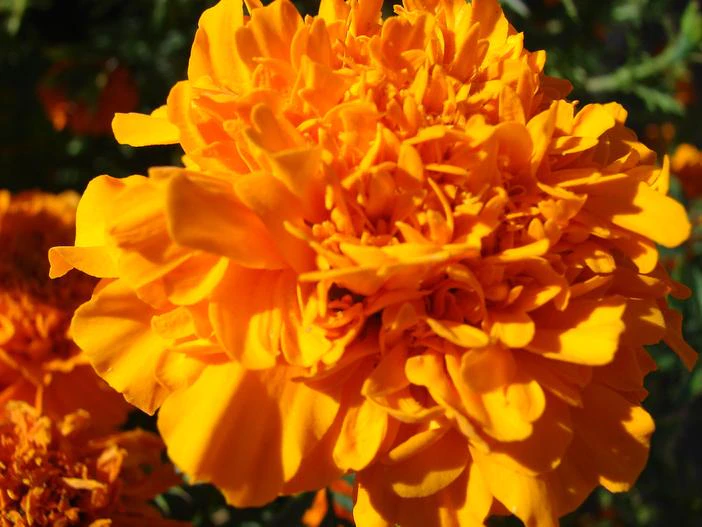Aztec Marigold
(Tagetes erecta)
Aztec Marigold (Tagetes erecta)
/
/

Forest and Kim Starr
CC BY 2.0















































































Estimated Native Range
Climate Requirements for Giza, Egypt
| This Plant | Your Site | Plant Suitability for Your Location | ||
|---|---|---|---|---|
| • Precipitation | 35" - 60" | 1" | Your precipitation may be insufficient for this plant. Irrigate N" / year. | Irrigate N" / year |
| • High Temp. | 71°F - 94°F | 94°F | Your summer temperatures are normal for this plant. | Excellent |
| • Low Temp. | 23°F - 57°F | 46°F | Your winter temperatures are normal for this plant | Excellent |
Summary
Aztec Marigold is popular in cultivation for its striking flowers and ease of maintenance. It is often used in ornamental plantings, borders, and as a staple in the cut-flower industry. The plant thrives in full sun and requires moderate watering, adapting well to a variety of soil types with different drainage capabilities. It is also known for its ability to repel nematodes in the soil, making it a beneficial companion plant in gardens. However, it can be susceptible to powdery mildew and root rot if overwatered or if airflow is poor. Gardeners should be mindful of its potential to self-seed and spread if not managed.CC BY-SA 4.0
Plant Description
- Plant Type:
- Height: 1-4 feet
- Width: 1-2 feet
- Growth Rate: Moderate
- Flower Color: Cream, Orange, Red, Yellow
- Flowering Season: Summer, Fall
- Leaf Retention:
Growth Requirements
- Sun: Full Sun
- Water: Medium
- Drainage: Fast, Medium, Slow
Common Uses
Bee Garden, Bird Garden, Border Plant, Butterfly Garden, Deer Resistant, Drought Tolerant, Edible*Disclaimer: Easyscape's listed plant edibility is for informational use. Always verify the safety and proper identification of any plant before consumption., Fragrant, Hummingbird Garden, Low Maintenance, Potted Plant, Rabbit Resistant, Rock Garden, Salt Tolerant, Showy Flowers, Street Planting
Natural Habitat
Open woodlands and scrub areas in Mexico
Other Names
Common Names: Mexican Marigold , African Marigold , Cempazúchitl , Cempasúchil , French Marigold , Saffron Marigold , Big Marigold , Marigold , American Marigold , Studentenblume
Scientific Names: Tagetes erecta , Tagetes patula , Tagetes heterocarpha , Tagetes excelsa , Tagetes erecta var. erecta , Tagetes corymbosa , Tagetes erecta f. erecta , Tagetes erecta subsp. erecta , Tagetes ernestii , Tagetes major
GBIF Accepted Name: Tagetes erecta L.